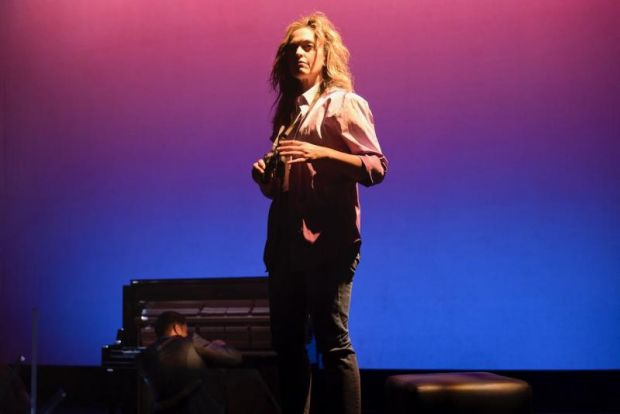The Story of the Oars
Not far from here there’s a lake, long etched into white mythology for its ability to variously flood or completely vanish, which makes it a rich setting for acclaimed author Nigel Featherstone’s new play The Story of the Oars. Stopping by the lake and beguiled by its beauty, a young photography enthusiast notices his father become oddly irritable and twitchy. Meanwhile two women, old friends, realise over glasses of wine that the day is the 30th anniversary of the disappearance of three teenaged boys. All of these people hold a piece of a puzzle which can only be revealed once they meet.
 The characters all bare scars from this tragedy. Sally Marett plays Pierra, single mother, winery owner and farmer of livestock. She exudes quiet, country resilience and pragmatism, with an abrasiveness that might come across initially as hostility but is more a layer of protection. Louise Bennet’s Gail is honest, unpretentious, coarse and brave, who dances alone by the campfire in a kind of exorcistic ritual. Callum Doherty conveys innocent young photographer Tom’s confusion and shock as hidden aspects of his father’s personality and past are revealed. As Tom’s father Henry, Craig Alexander again gets to play an imperfect middle-aged man full to the brim with self-pity and a complete blindness to the advantages of his status. This privilege is revealed at the end to be quite breathtaking.
The characters all bare scars from this tragedy. Sally Marett plays Pierra, single mother, winery owner and farmer of livestock. She exudes quiet, country resilience and pragmatism, with an abrasiveness that might come across initially as hostility but is more a layer of protection. Louise Bennet’s Gail is honest, unpretentious, coarse and brave, who dances alone by the campfire in a kind of exorcistic ritual. Callum Doherty conveys innocent young photographer Tom’s confusion and shock as hidden aspects of his father’s personality and past are revealed. As Tom’s father Henry, Craig Alexander again gets to play an imperfect middle-aged man full to the brim with self-pity and a complete blindness to the advantages of his status. This privilege is revealed at the end to be quite breathtaking.
Featherstone’s writing here is a structural experiment, a little reminiscent of Andrew Bovell’s Speaking in Tongues, in that naturalistic dialogue sections are broken with blocks of inner monologue in poetic form. This was sometimes repetitive, but when the free verse came together with strong recitation style it worked extremely well, notably when Louise Bennet delivered her lines in a crescendo full of rage and defiance.

The production was a thing of great beauty. Veronique Benett’s light and set design was a masterclass in economic symbolism, with props being either all black (including the glasses) or formed by light, in some cases literally made of lights. The show opens on composer and pianist Jay Cameron slowly and dramatically stripping panels off an upright piano, which he then moves around to access every part of, plucking, striking and scratching the strings as he plays the keyboard. Working with sound designer Kimmo Veronnen, many or perhaps even all of the sound effects were analogue and produced live by, say, pulling and dropping elasticized cords and striking bits of set. The result was a resonant and mysterious soundscape.
The Story of the Oars is a slow burn, with elements slowly coming into view as if emerging from mist. It’s an eerie, atmospheric tragedy that will keep you thinking long after you leave the theatre.
Cathy Bannister
Images: Nathan Smith Photography
Subscribe to our E-Newsletter, buy our latest print edition or find a Performing Arts book at Book Nook.

